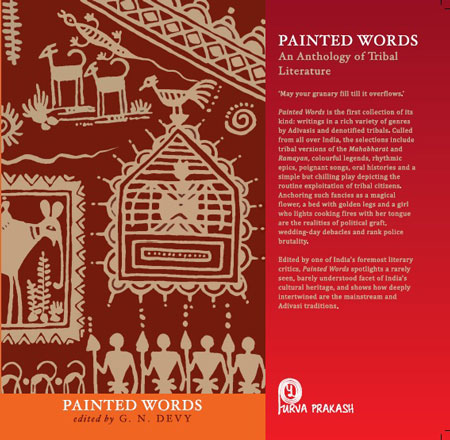Amutha Kannan, The Hindu, COIMBATORE, July 28, 2011
On the one hand, the languages spoken by tribal people have only an oral script and due to the non-literary nature there is no documentation of the grammar of the language. On the other, since there is very negligible number of people speaking these languages, they are not even listed. To address these problems, the Department of Linguistics of Bharathiar University, has been quietly working since 1995.
It has so far documented the descriptive grammar and digitised the rituals and traditions of Irula and Muduva tribes in the Western Ghats. And, it is about to begin the same process for another two. Though this specific exercise began only in 2004, a lot has been done even before that in other forms.
“It all began in 1995 when we came to know that the tribal children were finding it difficult to study in Tamil. Though the structure of Tamil and tribal languages were somewhat similar, the lexical and grammatical differences made it difficult for the children to read and hence there were many dropouts. The Department wanted to do something for the children to overcome the influence of the mother tongue,” says C. Sivashanmugam, Head of the Department.
In association with the Central Institute of Indian Languages, Mysore, the Department brought out cassettes and a manual for teachers to enable them teach Tamil in a simple manner to the tribal children. It was during this effort, it discovered that there was a need to do something to preserve the tribal languages and culture of the Western Ghats.
In 2004, the Department submitted a proposal to the University Grants Commission (UGC) for Special Assistance Programme (SAP) for five years for studying the language of two tribes. With the sanctioned assistance of Rs.19 lakh, the Department studied the language and culture of two tribes, documented the history, structure and grammar of the language, and digitised all the rituals.
The university is planning to publish the findings as a monograph by the end of 2011. In the meanwhile, the Department submitted another proposal to the UGC for undertaking a similar type of project for two more tribes. The Department received the SAP – Phase II grant of Rs.34.5 lakh for five years, this month, for which Mr. Sivashanmugam will be the co-ordinator, and V. Thayalan will be the deputy co-ordinator.
Though the Department has taken up the project a second time with much confidence, Mr. Sivashanmugam says that it is indeed a very difficult task. “The respondents are not co-operative. They are reluctant to spend time giving information. So, collecting data becomes a daunting task. Much has to be based on the community leader’s information. At the same time, research scholars and students of the Department are also not motivated to take up the study as the respondents, terrain, living conditions and food, are all deterrents. Also, a research thesis in tribal studies does not provide opportunities for attractive jobs,” Mr. Sivashanmugam says.
The Department has decided to conduct training programmes in preparing questionnaires, selecting the right attire during field visits, collecting data, recording techniques – so as not to threaten the respondent, handling audio/video equipment, etc. […]
“When even major regional languages are facing a set back in the light of globalisation, the state of tribal languages is nothing to write home about. There are only about 780 Thodas who speak the Thoda language and less than a lakh each of Irulas and Muduvas who speak their respective languages,” says Mr. Sivashanmugam.
The Department is on a mission to document as many tribal languages and cultures as possible before they become really extinct.
Source: The Hindu : NATIONAL / TAMIL NADU : Bharathiar University enthusiastic in documenting more tribal languages
Address : http://www.thehindu.com/todays-paper/tp-national/tp-tamilnadu/article2301012.ece
Date Visited: Sat Mar 10 2012 09:33:10 GMT+0100 (CET)
[Bold typeface added above for emphasis]
Learn more
Atree.org | Ashoka Trust for Research in Ecology & the Environment (posts)
Biodiversity | Hyderabad biodiversity pledge | Nilgiri Biosphere
Climate change | United Nations on climate change
eBook | Background guide for education
eLearning: Center for World Indigenous Studies
Health and nutrition | Recommendations by the Expert Committee

Tribal Literature by G.N. Devy >>
Free eBooks & Magazine: Adivasi literature and languages >>
“India, a union of states, is a Sovereign, Secular, Democratic Republic with a Parliamentary system of Government. The President is the constitutional head of Executive of the Union. In the states, the Governor, as the representative of the President, is the head of Executive. The system of government in states closely resembles that of the Union. There are 28 states and 8 Union territories in the country. Union Territories are administered by the President through an Administrator appointed by him/her. From the largest to the smallest, each State/UT of India has a unique demography, history and culture, dress, festivals, language etc. This section introduces you to the various States/UTs in the Country and urges you to explore their magnificent uniqueness…” – KnowIndia (Government), States and Union Territories (Visited: 2 September 2023)
Learn more about India’s 28 States and 8 Union Territories – From Andhra Pradesh to West Bengal | Nutrition >>